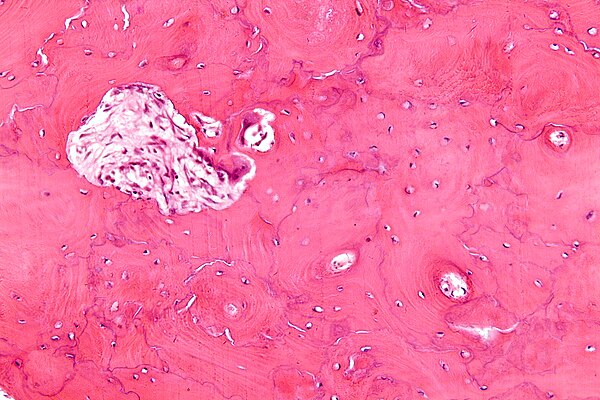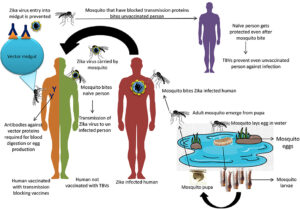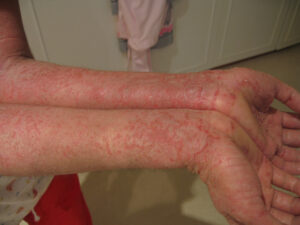Paget’s Disease of Bone, also known as Osteitis Deformans, is a chronic condition that disrupts the normal process of bone remodeling. This leads to abnormal bone growth, making bones weaker and more prone to fractures. Although it primarily affects older adults, understanding its causes, symptoms, and treatment options can help manage the disease effectively.

Understanding Paget’s Disease of Bone
Paget’s Disease of Bone is a disorder that interferes with the body’s natural process of breaking down old bone tissue and replacing it with new bone. In healthy individuals, this process occurs in a balanced manner. However, in people with this condition, the bone remodeling process becomes accelerated and disorganized, leading to enlarged, misshapen, and weakened bones.
The disease typically affects specific areas of the skeleton, such as the pelvis, spine, skull, and legs. While some individuals may experience mild symptoms or remain asymptomatic, others may face significant complications, including pain, deformities, and increased susceptibility to fractures.
How Common Is Paget’s Disease?
This condition is relatively uncommon but tends to occur more frequently in certain populations. It is more prevalent in individuals of European descent and is rare among people of Asian or African descent. The risk of developing the disease increases with age, particularly after the age of 50.
Causes of Paget’s Disease of Bone
The exact cause of Paget’s Disease of Bone remains unclear, but researchers believe it may result from a combination of genetic and environmental factors.
Genetic Factors
- Family History: Studies have shown that individuals with a family history of the disease are at a higher risk of developing it themselves. Certain gene mutations, such as those affecting the SQSTM1 gene, have been linked to an increased likelihood of the condition.
- Inherited Traits: Some cases of Paget’s Disease appear to be inherited in an autosomal dominant pattern, meaning that a person only needs to inherit one copy of the mutated gene from a parent to be at risk.
Environmental Factors
- Viral Infections: Some researchers suggest that viral infections, particularly during early life, may trigger the development of the disease in genetically predisposed individuals. The measles virus has been proposed as a potential contributing factor, although this theory is still under investigation.
- Lifestyle and Diet: While no direct link has been established, maintaining a healthy lifestyle and diet may help reduce the risk of complications associated with the disease.
Symptoms of Paget’s Disease of Bone
Many individuals with Paget’s Disease of Bone may not experience noticeable symptoms, especially in the early stages. When symptoms do occur, they often vary depending on the affected bones and the severity of the condition.
Common Symptoms
- Bone Pain: Persistent pain in the affected bones is one of the most common symptoms. The pain may worsen at night or during physical activity.
- Bone Deformities: Over time, the abnormal bone growth can lead to visible deformities, such as bowed legs or an enlarged skull.
- Fatigue: Some individuals may experience fatigue due to the increased metabolic activity of the bones.
- Hearing Loss: If the disease affects the skull, it can lead to hearing loss or tinnitus (ringing in the ears).
Complications
If left untreated, Paget’s Disease of Bone can lead to several complications, including:
- Fractures: Weakened bones are more susceptible to fractures, even with minimal trauma.
- Osteoarthritis: Abnormal bone growth can place stress on nearby joints, increasing the risk of osteoarthritis.
- Nerve Compression: Enlarged bones may compress nerves, leading to numbness, tingling, or weakness in the affected area.
- Heart Problems: In rare cases, the increased blood flow to the affected bones can strain the heart, potentially leading to heart failure.
Diagnosis of Paget’s Disease of Bone
Diagnosing Paget’s Disease of Bone typically involves a combination of clinical evaluation, imaging tests, and laboratory studies.
Clinical Evaluation
A healthcare provider will begin by reviewing the patient’s medical history and conducting a physical examination. They will look for signs such as bone pain, deformities, or changes in mobility.
Imaging Tests
- X-rays: X-rays can reveal characteristic changes in the bones, such as thickening, enlargement, or deformities.
- Bone Scans: A bone scan involves injecting a small amount of radioactive material into the bloodstream to highlight areas of increased bone activity.
- Magnetic Resonance Imaging (MRI): MRI scans provide detailed images of the bones and surrounding tissues, helping to identify complications such as nerve compression.
Laboratory Tests
- Blood Tests: Elevated levels of alkaline phosphatase, an enzyme produced by bone cells, can indicate increased bone turnover, which is a hallmark of the disease.
- Urine Tests: Urine tests may be used to measure markers of bone resorption, providing additional evidence of abnormal bone remodeling.
Treatment Options for Paget’s Disease of Bone
While there is no cure for Paget’s Disease of Bone, treatment focuses on managing symptoms, preventing complications, and slowing the progression of the disease. The choice of treatment depends on the severity of the condition and the presence of symptoms.
Medications
- Bisphosphonates: These medications are the mainstay of treatment for Paget’s Disease. They work by inhibiting the activity of cells responsible for breaking down bone tissue, thereby reducing bone turnover and alleviating symptoms.
- Calcitonin: Calcitonin is a hormone that helps regulate calcium levels in the body. It can be used as an alternative treatment for individuals who cannot tolerate bisphosphonates.
Pain Management
- Nonsteroidal Anti-Inflammatory Drugs (NSAIDs): Over-the-counter NSAIDs, such as ibuprofen or naproxen, can help relieve mild to moderate pain.
- Prescription Pain Relievers: For severe pain, a healthcare provider may prescribe stronger pain medications.
Physical Therapy
Physical therapy can play a crucial role in managing the condition by improving mobility, strengthening muscles, and reducing the risk of falls and fractures. A physical therapist can design a personalized exercise program tailored to the individual’s needs.
Surgical Interventions
In cases where complications arise, surgical intervention may be necessary. Common procedures include:
- Fracture Repair: Surgery may be required to stabilize and repair fractured bones.
- Joint Replacement: If osteoarthritis develops due to the disease, joint replacement surgery may be considered.
- Deformity Correction: Surgical procedures can help correct severe bone deformities that affect mobility or cause discomfort.
Lifestyle Modifications
Making certain lifestyle changes can help individuals manage the condition more effectively:
- Dietary Adjustments: Consuming a diet rich in calcium and vitamin D can support bone health.
- Regular Exercise: Low-impact activities, such as walking or swimming, can improve bone strength and overall well-being.
- Fall Prevention: Taking steps to prevent falls, such as removing tripping hazards and using assistive devices, can reduce the risk of fractures.
Living with Paget’s Disease of Bone
Managing Paget’s Disease of Bone requires a proactive approach to healthcare. Regular follow-up appointments with a healthcare provider are essential to monitor the progression of the disease and adjust treatment as needed. Additionally, staying informed about the condition and seeking support from healthcare professionals or support groups can help individuals cope with the challenges of living with the disease.





